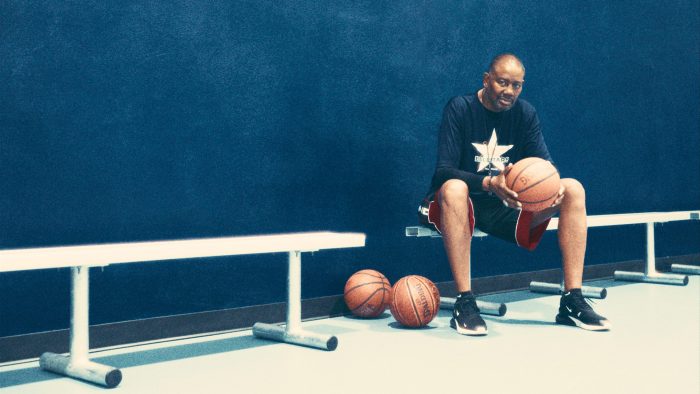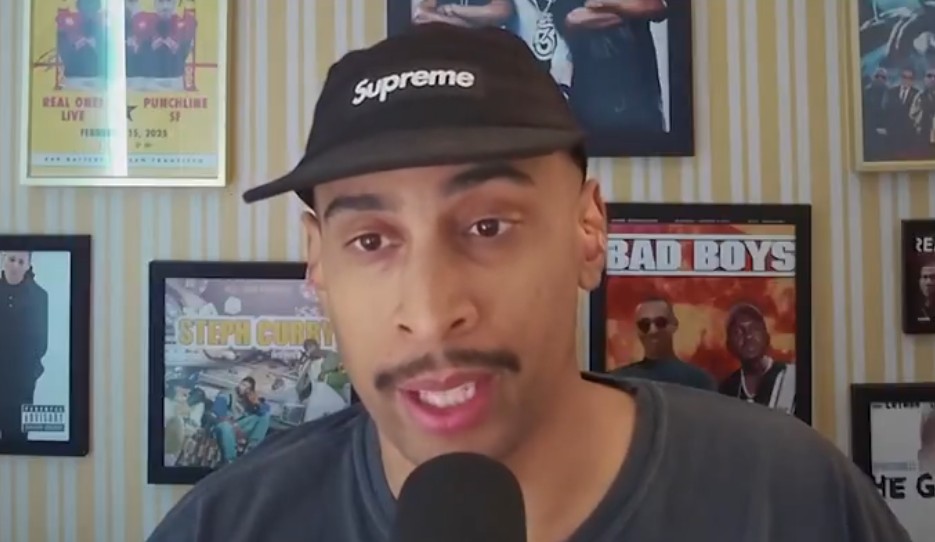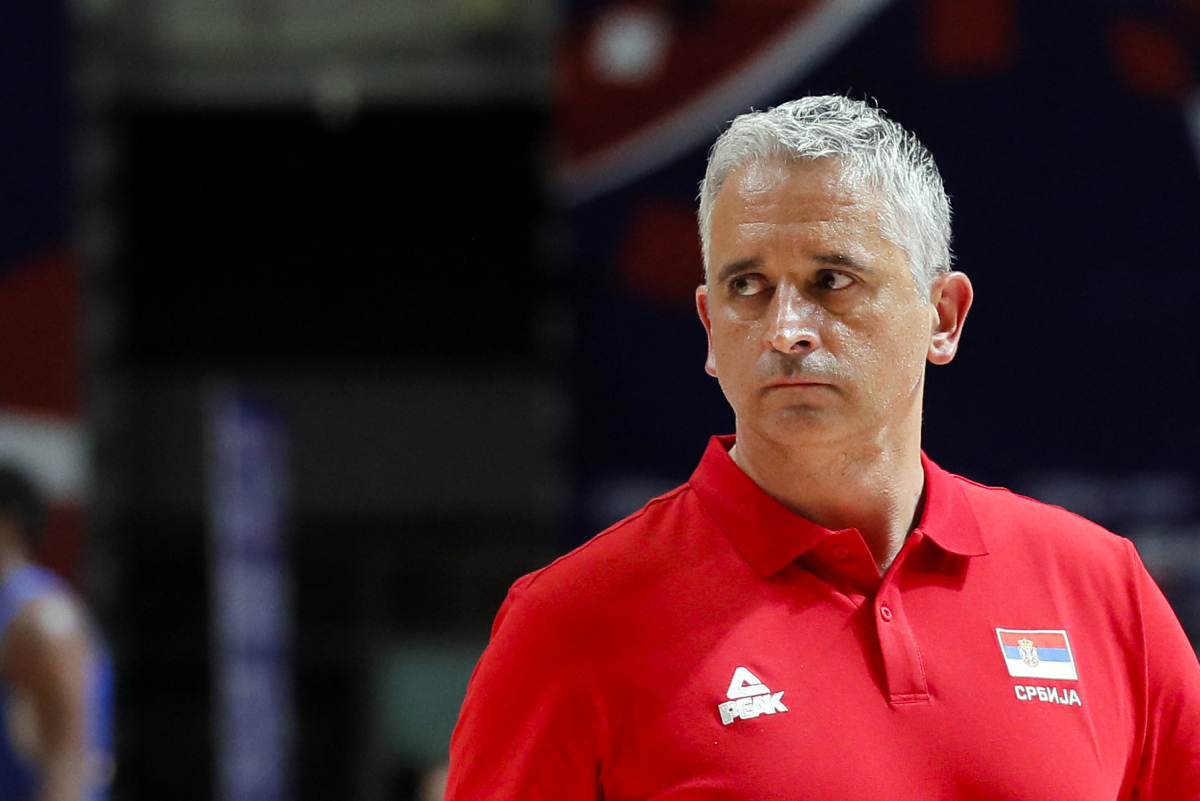OKLAHOMA CITY – On any given Oklahoma City Thunder game night at Paycom Center, it isn’t uncommon for one of the most decorated basketball players in the building to be sitting among fans.
Micheal Ray Richardson was a four-time NBA All-Star and two-time All-NBA first-team selection who led the league in steals three times and assists once, all in eight seasons. Even Thunder guard and 2025 NBA Most Valuable Player Shai Gilgeous-Alexander hasn’t reached those accolades.
What is much bigger than basketball, however, is Richardson’s cautionary tale, as drug use cost the Lawton, Oklahoma, resident his place in the NBA.
“There are a lot of times where I try to put my finger on it like, ‘How did I ever get into it?,’ ” Richardson, 70, told Andscape. “I never was a drinker when I was in college. Never was a weed smoker. And to this day, I couldn’t put my finger on how I got involved. I just don’t know.
“It just came up on me. I can’t figure it out. But it’s something that the good Lord made me go through.”

Dick Raphael/NBAE via Getty Images
Richardson had his best NBA season as a member of the New Jersey Nets during the 1984-85 season and was considered a star player on offense and defense. That season, the 6-foot-5 shooting guard averaged a career-high 20.1 points, 8.2 assists, 5.6 rebounds and a league-best 3.0 steals per game. Those Nets appeared on the rise with a 42-40 record, a first-round playoff appearance and a talented young team with Richardson, Otis Birdsong, Mike Gminski, Buck Williams and Daryll Dawkins on the roster.
As the Nets’ lone NBA All-Star, Richardson was the face of the franchise.
“I love him. He had it all as a player, with no weaknesses in his game,” said former Detroit Pistons guard Isiah Thomas, a Naismith Basketball Hall of Famer. “He is the player who gave me the most problems playing against him. He was taller, just as fast and could shoot from 3 and midrange. His post-up game was elite. Offensively, he had it all.”
Said Birdsong: “He never really feared any opponent. I tell people this story and they don’t believe it. He used to go in the [opponents’] locker room, whether it was Isiah or Magic [Johnson], and he would tell them, ‘I’m gonna bust you’re a– tonight.’ He was fearless and that’s how he played. …
“On the court, fearless, competitive, feisty, mean, nasty. Not mean and nasty in a bad way, just in a competitive way. And off the court, do anything for you. Funny. Fun-loving. Totally different person off the court.”
Richardson, however, was a different person off the court due to his substance abuse problems that included cocaine use. He wasn’t alone. The NBA was riddled with drug use in the late 1970s and early 1980s. In 1980, The Washington Post cited players and executives in the NBA who estimated 40% to 75% of the league’s players used cocaine.
Spencer Haywood struggled with cocaine addiction while playing for the Los Angeles Lakers during the 1979-80 season and was waived during the 1980 NBA Finals for falling asleep at practice after drug use. Former University of Maryland star forward Len Bias was selected No. 2 overall in the 1986 NBA draft by the Boston Celtics but died two days later after suffering from cardiac arrhythmia caused by cocaine overdose. Former NBA center Chris Washburn was barred in 1989 for cocaine use and didn’t become sober until 2000.
“Once you start doing it, the s— just takes over and you don’t think you have a problem,” Richardson said. “Anything that you do that you can’t stop means that you got a problem. Gambling, sex, alcohol, drugs, it’s all the same.”

NBA Photo Library/NBAE via Getty Images

Alexander Aguiar for Andscape
Richardson, a Denver native who starred at the University of Montana, was selected by the New York Knicks with the fourth overall pick in the 1978 NBA draft. The Los Angeles Times once described him as “naïve” having arrived at the Knicks “greatly unprepared for both life in a big city and the pressures of professional sports. He apparently just could not cope.” The newspaper also reported that Richardson’s agent, Charles Grantham, said at the time his client battled with depression, low self-esteem and other issues.
“It’s something that the good Lord made me go through,” Richardson said.
According to the Los Angeles Times, Richardson went to drug-rehabilitation centers five times between 1978-1985 after first experimenting with cocaine in 1978. While playing for the Golden State Warriors during the 1982-83 season, he told The Guardian that he would sit in his hotel room all day smoking drugs in Oakland, California, and players would talk in pregame warmups about getting together after the game to do drugs. Sports Illustrated reported that Richardson’s drug and financial problems worsened at Golden State and he missed an East Coast trip that season because “he owed money back East, and there were people looking for him.”
According to the Collective Bargaining Agreement between the NBA and the Players Association in the mid-1980s, a repeat chemical abuse offender would be suspended for two years. Richardson’s first offense was during the Warriors’ 1982-83 season before that aforementioned agreement was in place. The Warriors traded Richardson to the Nets for guard Sleepy Floyd and forward Mickey Johnson on Feb. 6, 1983.
After two admitted incidents of dependency on cocaine, Richardson disappeared for a full week at the Nets’ training camp in September of 1983. The Nets suspended Richardson and he entered drug rehabilitation. After the Lakers flirted with trying to sign Richardson, the Nets reinstated him after receiving pressure from the NBA and the NBA Players Association.
“I was disappointed of course,” Birdsong, then on the Nets, told Andscape. “I want to win and we’re a much better team with him on the floor. He’s my backcourt mate. I was disappointed in the basketball side of it. On the personal side of it, I didn’t know how to react because I didn’t know the effects and how powerful that drug was and is. …
“In my mind, I’m thinking it’s like an alcohol or marijuana addiction. No one really knew the effects and how powerful it was. I thought he would go to rehab a couple weeks and be fine. I really didn’t know. I hadn’t experienced no one else who was doing crack or how it affected them.”
During the 1985-86 season, then-Nets head coach Dave Wohl said Richardson “has been a constant distraction to the team.” The Nets were 23-14 on Dec. 27, 1985, when Richardson admitted himself into Van Nuys Community Hospital for treatment. The 1985 NBA Comeback Player of the Year had 16 points and nine assists in the Nets’ 99-89 road loss against the Washington Bullets on Feb. 24, 1986, in Landover, Maryland — his last NBA game.
The next day after getting off the plane in Newark, New Jersey, with the Nets, Richardson was told by an NBA official that commissioner David Stern banned him from the league for life. He became the first active NBA player to be banned from the league after he tested positive for cocaine use for the third time since the 1983-84 season, when the league’s drug policy went into effect.
“My darkest day was when the guy [from the NBA] met me at the airport and told me I was banned from the NBA. I will never forget that day,” Richardson said. “They waited for me in Newark. As soon as I got off the plane, I knew what was going on. After that, I went home and went on a few days binge. And then after that, I came to. I got myself into it. I have to get myself out.”
Birdsong was shocked about Richardson’s punishment. He said he didn’t know Richardson had an addiction on that level and that he never saw him do drugs nor was he asked to participate. Richardson’s absence also stung the Nets, who finished the 1985-86 season 39-43 and were swept in the first round of the playoffs by the Milwaukee Bucks.
“The first thought [I had] is he could never play in the NBA again,” Birdsong said. “I’m stunned. Beyond shocked. You’re numb. He’s kicked out of the league? Forfeit the contract or fine him. Now they do stuff like that, but back in the 80s that wasn’t done.”

AP Photo/G. Paul Burnett
Richardson was able to apply for reinstatement into the NBA two years after being suspended. More importantly, he was able to sober up. Next up for Richardson were stints in the American minor leagues with the Long Island Knights and the Albany Patroons. In 1988, he left America signing with Virtus Bologna, a prominent club in Italy.
Richardson could have applied for reinstatement into the NBA in 1988. But after enjoying life in Europe that included one to two basketball games per week, he decided he would continue playing abroad instead. Richardson starred professionally in Italy, Croatia, Israel and France. Highlights included being the leading scorer while winning the 1990 FIBA European Winners’ Cup, winning a French championship, two Italian Cups and a Croatian Cup. He made seven All-Star appearances in Europe before officially retiring in 2001 at 46.
“I had a good NBA career, but it should’ve been longer,” Richardson said. “Playing overseas was a lot better for me because I was only playing one game a week. [In the] NBA, I’m playing four or five games per week. I was able to play until I was 46 and I was averaging about 33 minutes per game.”
An book titled “Banned: How I Squandered an All-Star NBA Career Before Finding My Redemption,” was released last year, co-written by Richardson and Jacob Uitti. In the book, Richardson opened up about his life on and off the court.
“I wrote the book so I could tell my story,” Richardson said. “There were a couple of people that wrote stories in the newspaper and stuff. But I wanted people to hear it from me. So, that is why I want to write the book, to set the record straight. I’m really proud of the book.
“What I hope [readers] gain from it is knowing that there is always a dark side and always an end of the tunnel. It don’t have to be like that. Only you can change it.”
Richardson once said that Stern’s ban from the NBA saved his life. The late NBA commissioner helped Richardson land a job as a community ambassador for his hometown Denver Nuggets in 2003. Richardson went on to coaching the last American pro team he played for in Albany, New York, in the Continental Basketball Association.
Richardson next moved to Oklahoma in 2007 to coach the Oklahoma City Cavalry of the CBA. With the arrival of the Thunder to Oklahoma City in 2008, the CBA franchise moved to Lawton, Oklahoma, and was rebranded as the Lawton-Fort Sill Cavalry with Richardson coaching the team. Richardson led the Cavalry to three consecutive titles with the CBA in 2008 and 2009 and the Premier Basketball League in 2010. He still proudly wears the championship rings and is a local celebrity.

AP Photo/The Canadian Press, Dave Chidley
“Coaching there, I won three championships,” Richardson said of Lawton, a town of about 90,000 people and located about 87 miles southwest of Oklahoma City. “A lot of people went to the games. I know a lot of people there.”
Richardson coached the London Lightning of NBL Canada from 2011-14 and has coached basketball camps for underserved communities each summer since 2014 with Birdsong in Florida, New Jersey and California. Even so, Richardson has continued to make Lawton his home base. He also met his wife, Kimberly, there and she owns a beauty salon.
After playing in major American and European cities, Richardson is enjoying the slower pace of Lawton.
“I met my wife in 2007, I ended up buying a house and I’m still here,” Richardson said. “Lawton is a laid-back town. It’s a family town. There is not a lot of traffic. I can’t do the traffic thing no more. As you get older, you just don’t want to it. They have a couple nice restaurants I go to, but I’m in bed at 7:30, 8 o’clock. Now, my entertainment is going to the Oklahoma City Thunder games.”

Marc J. Spears/Andscape
It’s not uncommon to see Richardson sitting in the second row at most Thunder home game next to lawyer, former co-Cavalry owner and close friend John Zelbst, who has four second-row season tickets. Due to a previous basketball camp commitment, Richardson will only be able to attend these NBA Finals if the Thunder reach Game 7 in Oklahoma City on June 22.
While watching Thunder games up close, Richardson can dream about what it would have been like for him in his prime to play in today’s NBA.
“It’s a different game. It’s a lot faster. A lot more shot-taking,” Richardson said. “But it’s not like the way we played the game. The way we played the game was inside-out. They play outside-in. …
“Oh boy, I’d shoot 10 free throws a game now because you can’t touch anybody. Back when I played, you were able to hand check and use our forearm. You can’t use none of that now. It’s a whole different game. Back when we played, it was a lot more physical.”
Birdsong, a former Cavalry president and general manager, isn’t surprised that Richardson still lives in Lawton.
“He played in the limelight,” Birdsong said. “He played in New York, New Jersey. Been on the West Coast at Golden State. He was overseas for 15 years. He’s lived the life. He’s not chasing anything and not chasing anyone. And he’s content with his life in Lawton, Oklahoma.”
Richardson turned 70 on April 13. He said two sisters and a daughter threw him a birthday party in Phoenix with about 70 people attending, including family and close friends. Birdsong, who attended, said Richardson was touched by the number of people who attended his party.
After a roller-coaster life that included the thrill of playing and coaching pro basketball to a fall from drug use, Richardson is happy to be alive.
“I’m still here after all the s— I’ve gone through,” Richardson said. “I was thanking everyone for coming. It was a surprise. All of my friends were happy to see me because I haven’t seen all of my friends in 10 years. It’s really good to see your friends because every year you lose somebody.
“I have lost a lot of my high school buddies. Only two are living. It’s a blessing to be alive.”


